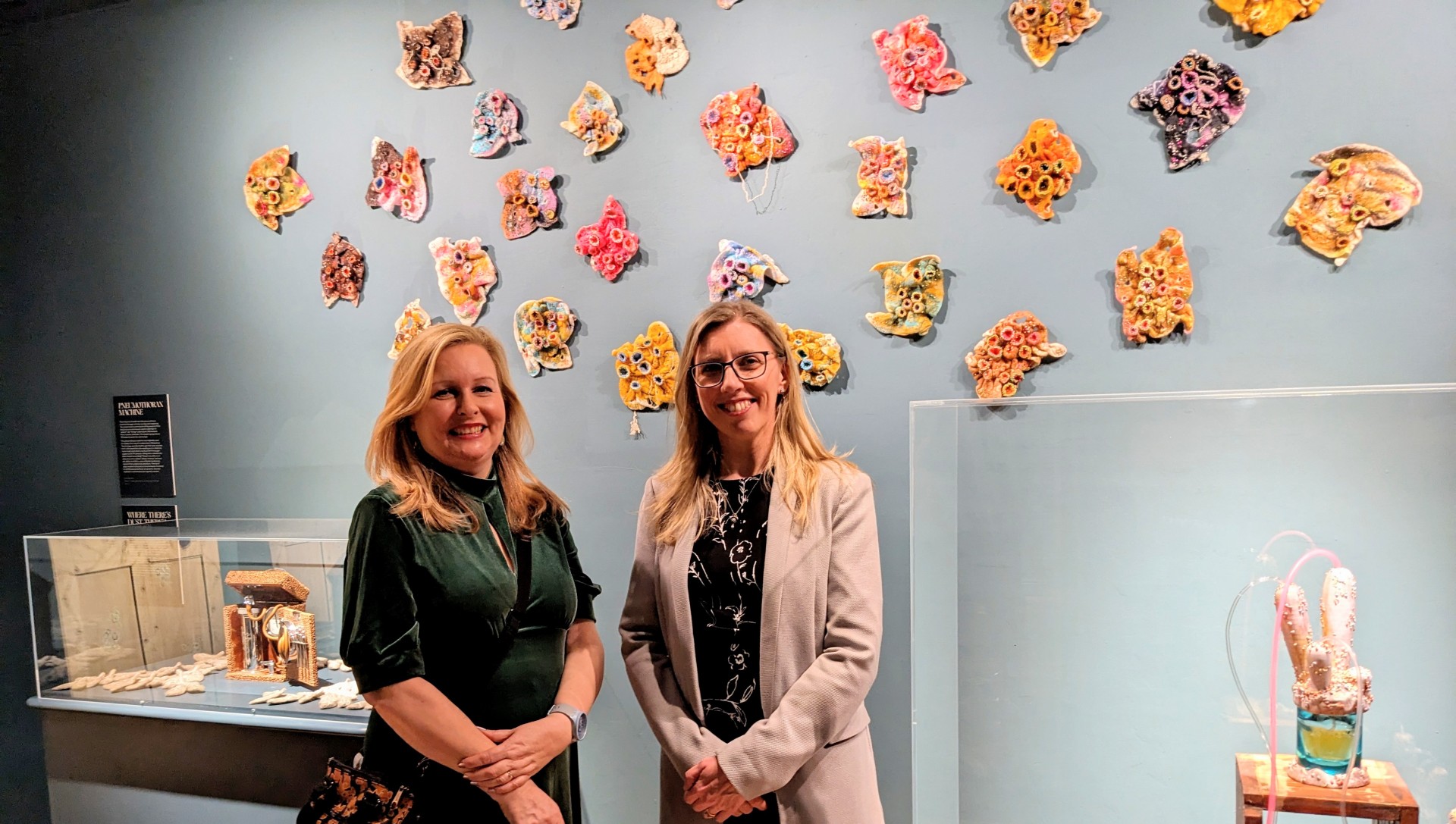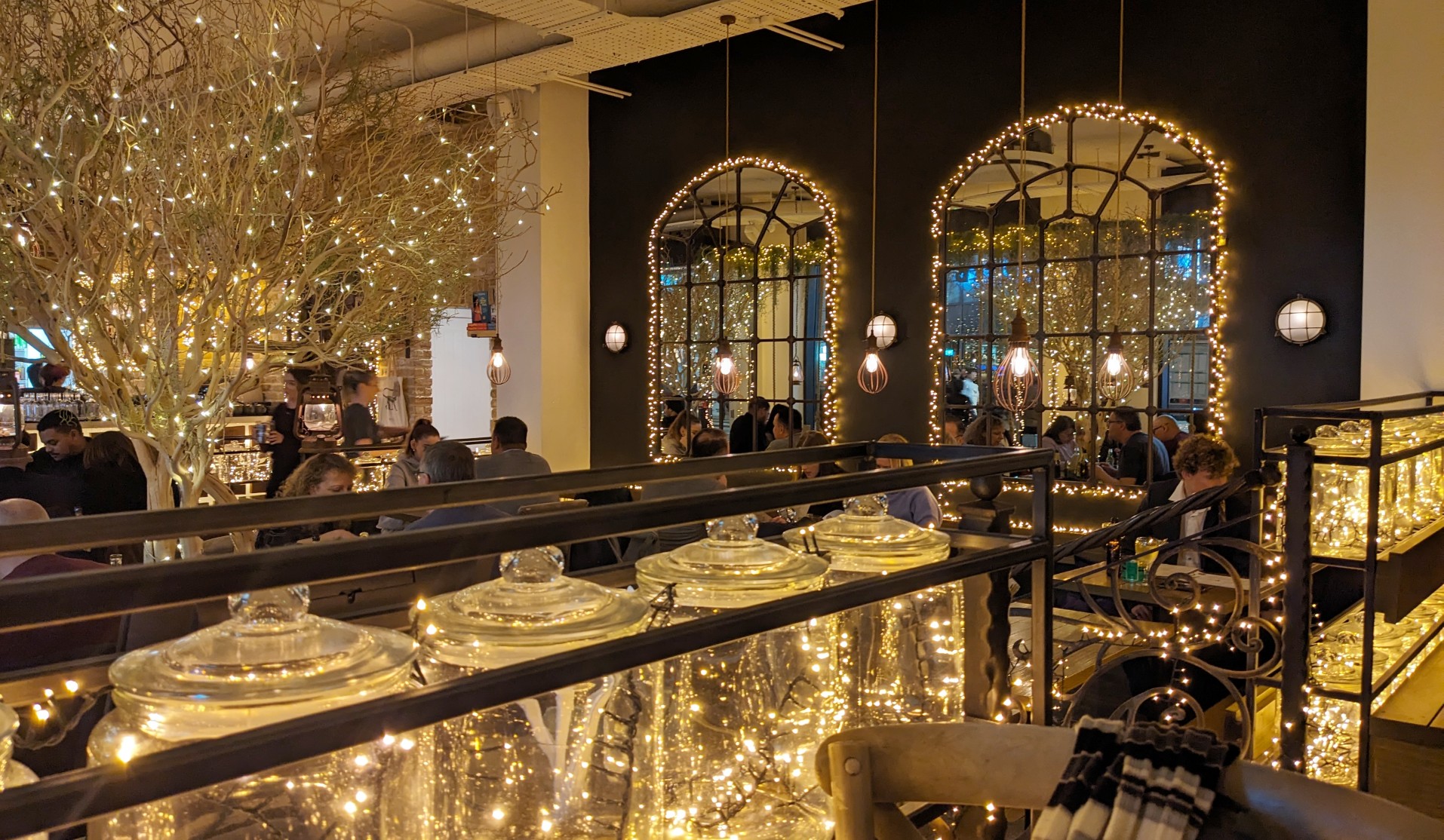Paul Grist’s exhibition in the Atrium Gallery, at St James’s University Hospital, is the product of inspiration from Florence Nightingale, and recovery from cancer. All the work on display was produced from 2019 to 2020, when Paul was being treated at the hospital. He views his creative outpouring as part of his recovery process.
On his first visit to the Oncology Unit in Bexley Wing, he was captivated by a quotation from Florence Nightingale’s Notes on Nursing, printed on the central Atrium wall;
Little as we know about the way in which we are affected by form, by colour, and light, we do know this, that they have an actual physical effect. Variety of form and brilliancy of colour are actual means of recovery.
The quote features in a screen print collage on display in the exhibition, entitled Healing, reflecting the part that colour and form have played in Paul’s own healing.
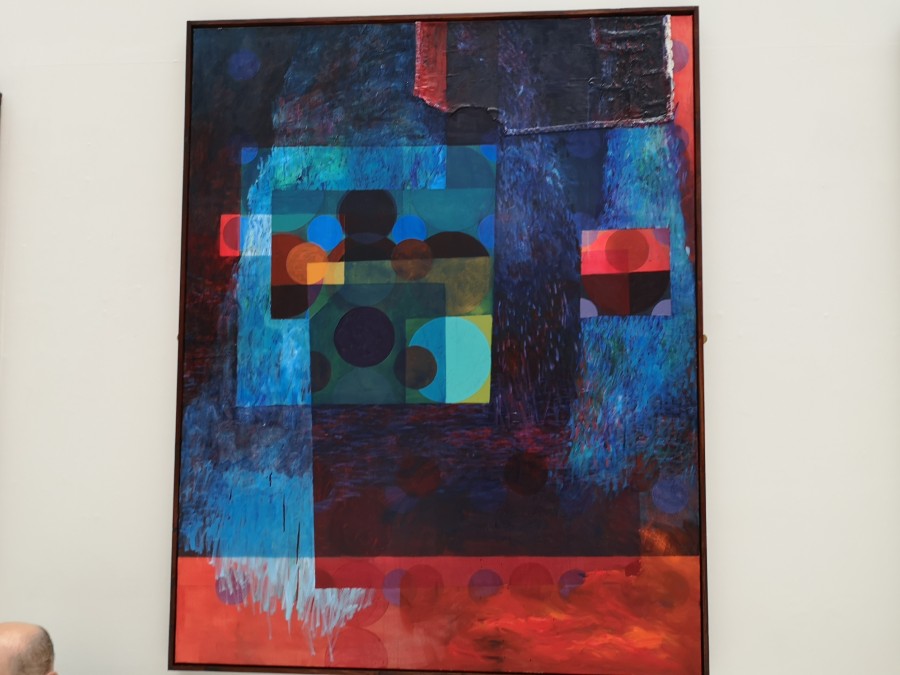
Paul has always been a keen amateur artist. He originally studied Architecture at art college before becoming a teacher. His teaching has reflected his commitment to social justice, delivering Sociology, History and Politics lessons to secondary students. In these works, Paul focuses on the interplay of colour, in order to achieve a more aesthetic art form.
Long term sick leave, while he underwent seventy sessions of radiotherapy, meant time for art opened up. He was freed from the demands of daily working life. Rather than dwell upon the cancer, he chose to allow his mind to reflect upon art, developing ideas that had previously never had the space to reach full fruition.
The art work is diverse. He works in many mediums, enjoying exploring different techniques, but the medium and content also relate to his experiences with cancer. He explained to me, that when very sick he chose to produce a still life drawing of lilies. The slow, meticulous drawing suited his physical and mental state. He noted that at other times of trauma he has produced still life work.
Most of the artwork is more active, featuring bold colours. Much of it relates to an appreciation of nature. Springtime, with its bold yellows fading into white, articulated my own experience of walking in the Spring of 2020. Paul had originally titled it Strange Spring, taken with the stillness of the City and the brightness of yellow spring plants, as he made his way to appointments. He told me that he played Vivaldi’s Spring, from the Four Seasons, in hard rotation whilst completing it.
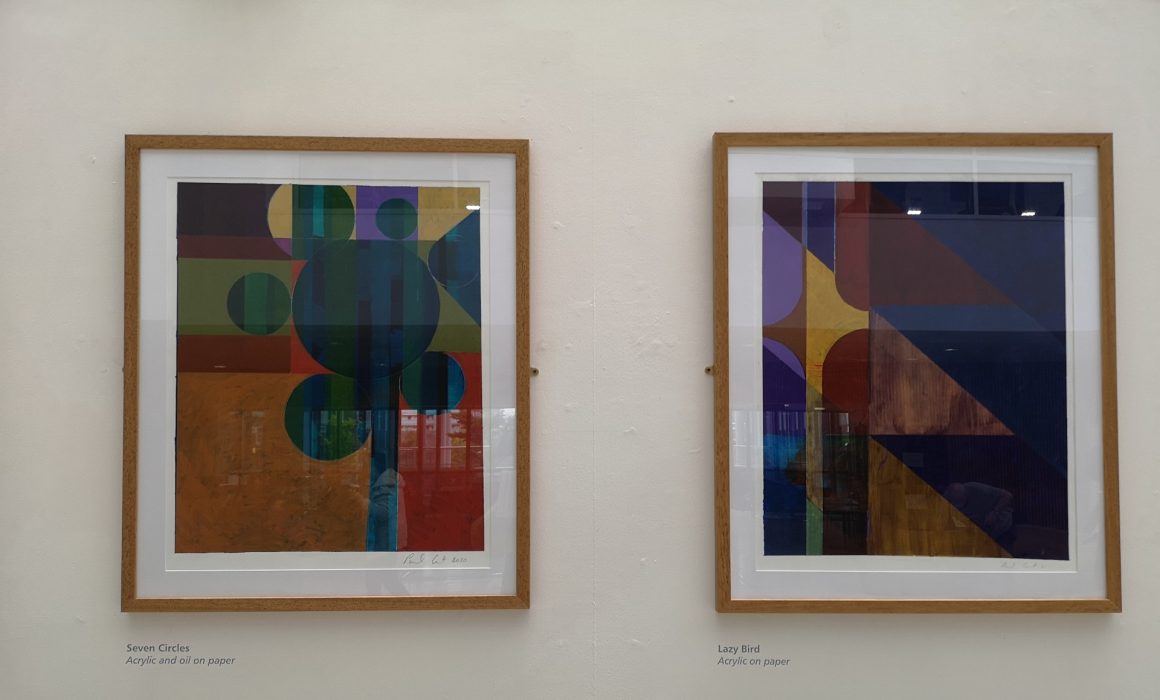
The Atrium Gallery is an ideal space for this exhibition. The works are flooded with natural light, intensifying the strong colour palette. Themes of nature, reflection and healing sit well here. Paul talked to me about how he’d moved towards a philosophy of art promoted by Victor Pasmore: art should come from life and be part of life. Here the art becomes part of the everyday life of the hospital. I sat and watched while staff came to drink coffee on a break, relatives sat reading while waiting for someone having treatment, or patients spent time before their appointments.
Leeds hospitals have always had a commitment to Art. Various works are displayed throughout the hospital, I particularly like Judith Cain’s work on the Radiography corridor. Red Kite View, the new Children and Young People’s Mental Health Inpatient Service, have also purchased one of Paul’s pieces, and he has donated another. He was surprised when walking around St James to see two pieces of art painted by his father, Bryan Grist, who was also a teacher and artist. However, the Atrium is exceptional in offering a varied menu of art to patients, and facilities, as good as a commercial gallery, to artists.
My favourite exhibition pieces were Compass and Late Summer. These were the last artworks produced for the exhibition. They have moved away from strict geometry and have a freedom of gesture and blending of colour not seen in some of the earlier work. The vigour of these works may reflect Paul’s restoration to full health, but they also seem indicative of an artist who has found new forms of creativity.
Paul underwent two courses of treatment on one side, then the other side of his throat. He still visits St James Hospital for regular check-ups but has been cancer-free since 2020. His cancer developed from a strain of the HPV virus. Often associated with ovarian and cervical cancer, Paul is keen to point out that HPV can also lead to cancer in men, emphasising the need for all young people to take up the option of HPV vaccination. He also encourages people to check their body for changes. He did not feel ill, but an irritation in his mouth led him to notice an unusual growth at the back of his throat. Getting it checked out saved his life.
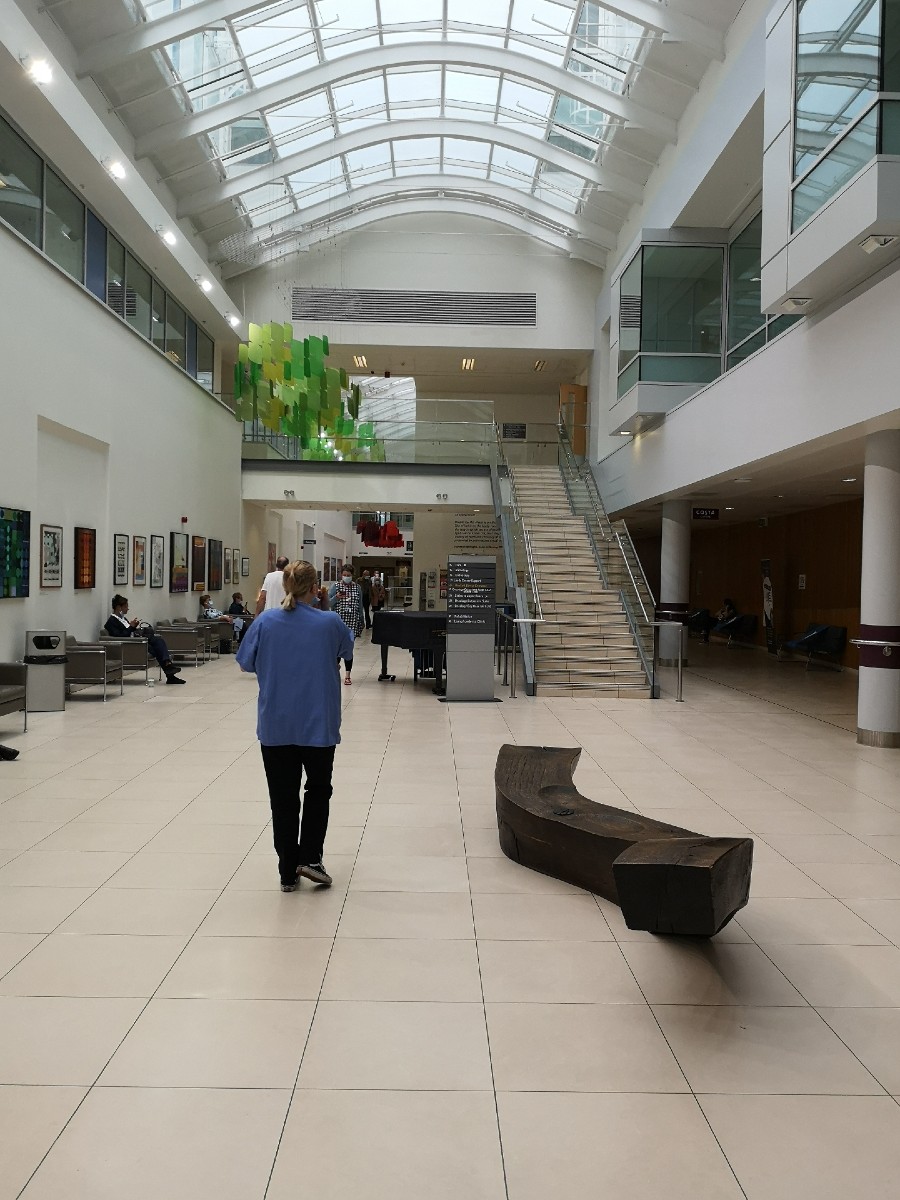
Paul felt supported and cared for throughout his cancer experience. He has nothing but praise for the facilities and staff at the Bexley Wing. He got to know the staff and environment well. Seeing art on his regular visits, a new exhibition is hung every three months, was part of the reassurance he felt. Going home and producing art was part of his means of recovery.
This is Paul Grist’s first exhibition. His experiences have renewed his interest and commitment to art, so it may well not be his last. Paul’s work will be on display until mid-July. All work is available to be purchased, with 35% of sales going to the hospital.
Means of Recovery
Atrium Gallery
Floor 0, Bexley Wing
St James’s University Hospital
Beckett St
LS9 7TF
For more information email [email protected]


